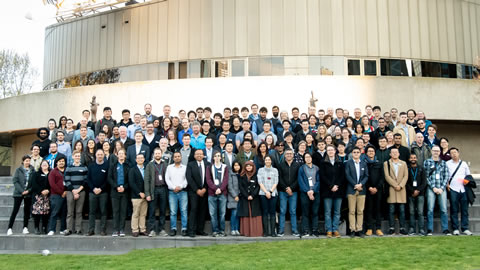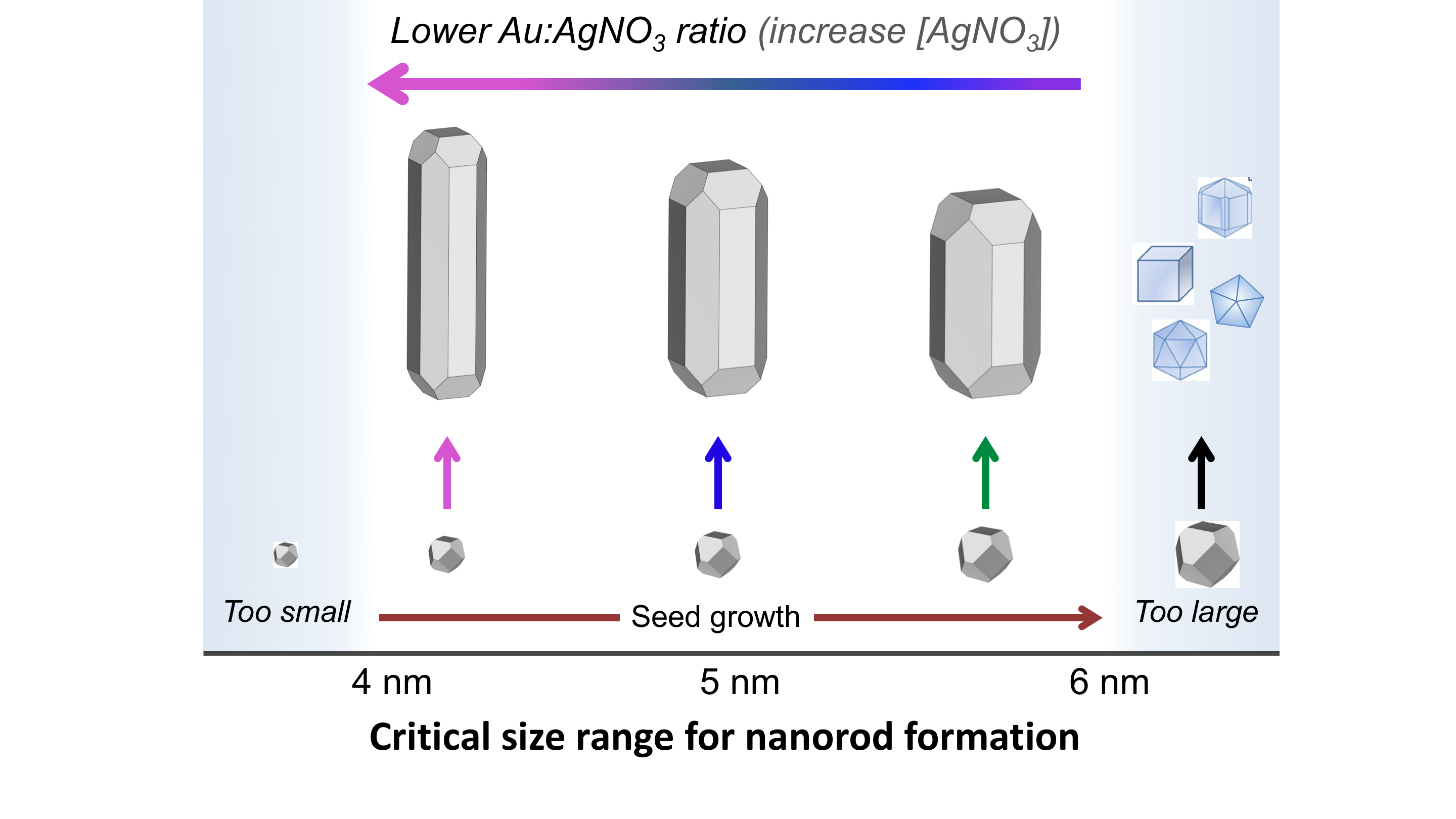News
3MT CompetitionAnchal Yadav presented her PhD project in the three minute thesis competition (3MT). The aim of this is to present your project to a general audience, in three minutes and using only one page of images! Anchal very successfully presented her research on the "caging" of semiconductor nanocrystals! |

|
A Mechanism for Symmetry Breaking and Shape Control in Single- Crystal Gold Nanorods

Inspired by recent experimental results and drawing upon the wider literature, we present a mechanism for gold nanorod growth from the moments prior to symmetry breaking to the final product. In particular, we describe the steps by which a cuboctahedral seed particle breaks symmetry and undergoes anisotropic growth to form a nanorod. With an emphasis on the evolving crystal structure, we highlight the key geometrical and chemical drivers behind the symmetry breaking process and factors that govern the formation and growth of nanorods, including control over the crystal width, length, and surface faceting. Recently published in Acc. Chem. Res. See Publications
ARC Centre of Excellence in Exciton Science LaunchedThe ARC Centre of Excellence in Exciton Science was officially launced by the the Chief Executive Officer of the Australian Research Council, Professor Sue Thomas. The launch was held on December the 13th 2017 at a ceremony at The University of Melbourne. The Centre of Excellence in Exciton Science aims to manipulate the way light energy is absorbed, transported and transformed. The new Centre is multidisciplinary and multi-institutional, bringing together researchers from across the sciences to create new materials for advanced optical and energy applications, including next generation solar cells, LEDs, sensors and responsive optical materials. It has nodes at Monash University, The University of Melbourne, RMIT, The University of Sydney and The University of New South Wales. For opportunities to carry out a PhD within the new Centre and more information, please see the opportunities page as well as http://www.excitonscience.com |
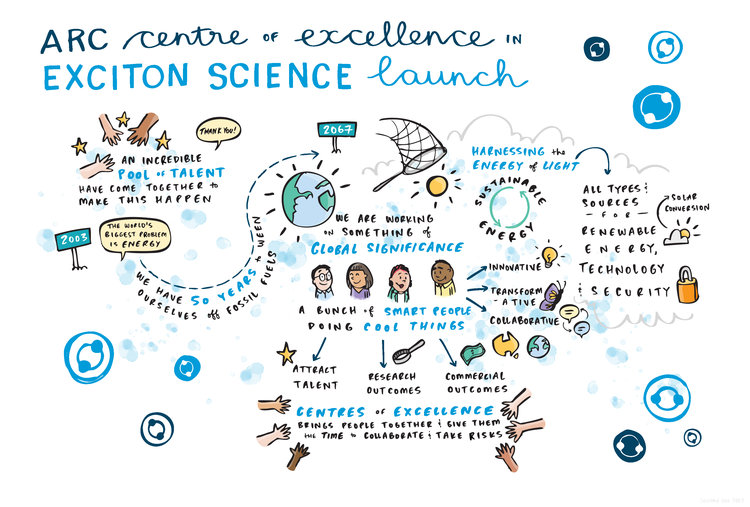
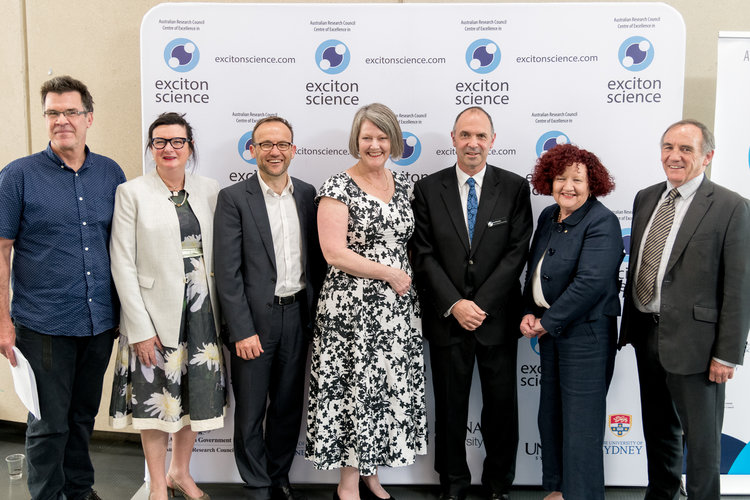 |
Control of Symmetry Breaking Size and Aspect Ratio in Gold Nanorods: Underlying Role of Silver NitrateWell done Wenming Tong and Michael Walsh for their research to determine how silver nitrate controls the aspect ratio of single crystal gold nanorods! Recently published in J. Phys. Chem. C. See Publications
Abstract: Single crystal gold nanorods remain one of the most important and intensively studied anisotropic nanocrystals. The aspect ratio of the nanorods is controlled during the colloidal synthesis using silver nitrate; however, the mechanisms for the underlying control are not well understood. Here, we investigate the growth of gold nanocrystals at the stage where they break symmetry and begin anisotropic growth into nanorods. Using high resolution electron microscopy, we determine directly the size and atomic structure of the nanocrystals at the symmetry breaking point. We find that silver nitrate controls the size of the crystal at which symmetry breaking occurs. The seed crystal undergoes a symmetry breaking event at a critical diameter between 4 and 6 nm that depends upon the [HAuCl4]:[AgNO3] ratio. The smallest diameter for symmetry breaking, ∼4 nm, is observed at the lowest [HAuCl4]:[AgNO3] ratio (i.e., the highest AgNO3 concentration) corresponding to the minimum size at which a “truncation” can form, a precursor to a {110} facet. The diameter of the nanocrystal at the symmetry breaking point becomes the width of the nascent nanorod, and this in turn determines the final nanorod width. Surprisingly, the [HAuCl4]:[AgNO3] ratio has little effect on the final nanorod length. Our observations explain why the nanorod aspect ratio is constrained within a limited range. This provides a rational framework for controlling width and aspect ratio in the growth of single crystal gold nanorods. |
Aligned Linear Arrays of Crystalline NanoparticlesOur recently reported fabrication of highly regular and linear arrays of crystalline metal nanoparticles via a combined top-down and bottom-up approach, published in J. Phys. Chem. Lett., has been highlighted in Chemical and Engineering News.
Abstract: Fabrication of one-dimensional arrays of crystalline nanoparticles with tunable particle size and spacing (down to 20 nm) is demonstrated. The individual nanocrystals are pentagonal prisms, and the arrays are up to 11 μm in length, with some arrays containing >50 nanocrystals. Precise particle morphology and interparticle spacing can be maintained down the array. The far-field scattering spectra of the arrays show the near-fields of the nanocrystals are coupled. The method is fast and produces precise, well- defined, coupled plasmonic arrays with optical properties that match well to theory. |
Formation and Optical Properties of Discrete Three-dimensional Assemblies of Gold NanospheresResearch into the assembly of three-dimensional structures from gold nanocrystals has been published in Nature Communications. Abstract: The three-dimensional (3D) self-assembly of nanocrystals constitutes one of the most important challenges in materials science. A key milestone is the synthesis of simple, regular structures, such as platonic solids, composed of nanocrystal building blocks. Such objects are predicted to have unique optical and electronic properties such as polarization-independent light-scattering and intense local fields. Here we present a two-stage process for fabricating well-defined and highly symmetric, 3D gold nanocrystal structures, including tetrahedra, 3D pentamers and 3D hexamers. Polarized scattering spectra are used to elucidate the plasmon modes present in each structure, and these are compared with computational models. We conclude that self-assembly of highly symmetric, polarization-independent structures with interparticle spacings of order 0.5nm can now be fabricated. Drastically, enhanced local fields, 1000 times higher than the incident field strength, are produced within the interstices. Fano resonances are generated if the symmetry is broken. See this and other related manuscripts on the Publications page. |
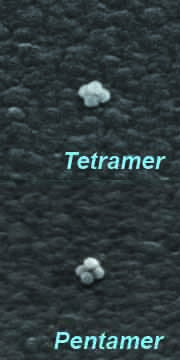 |

